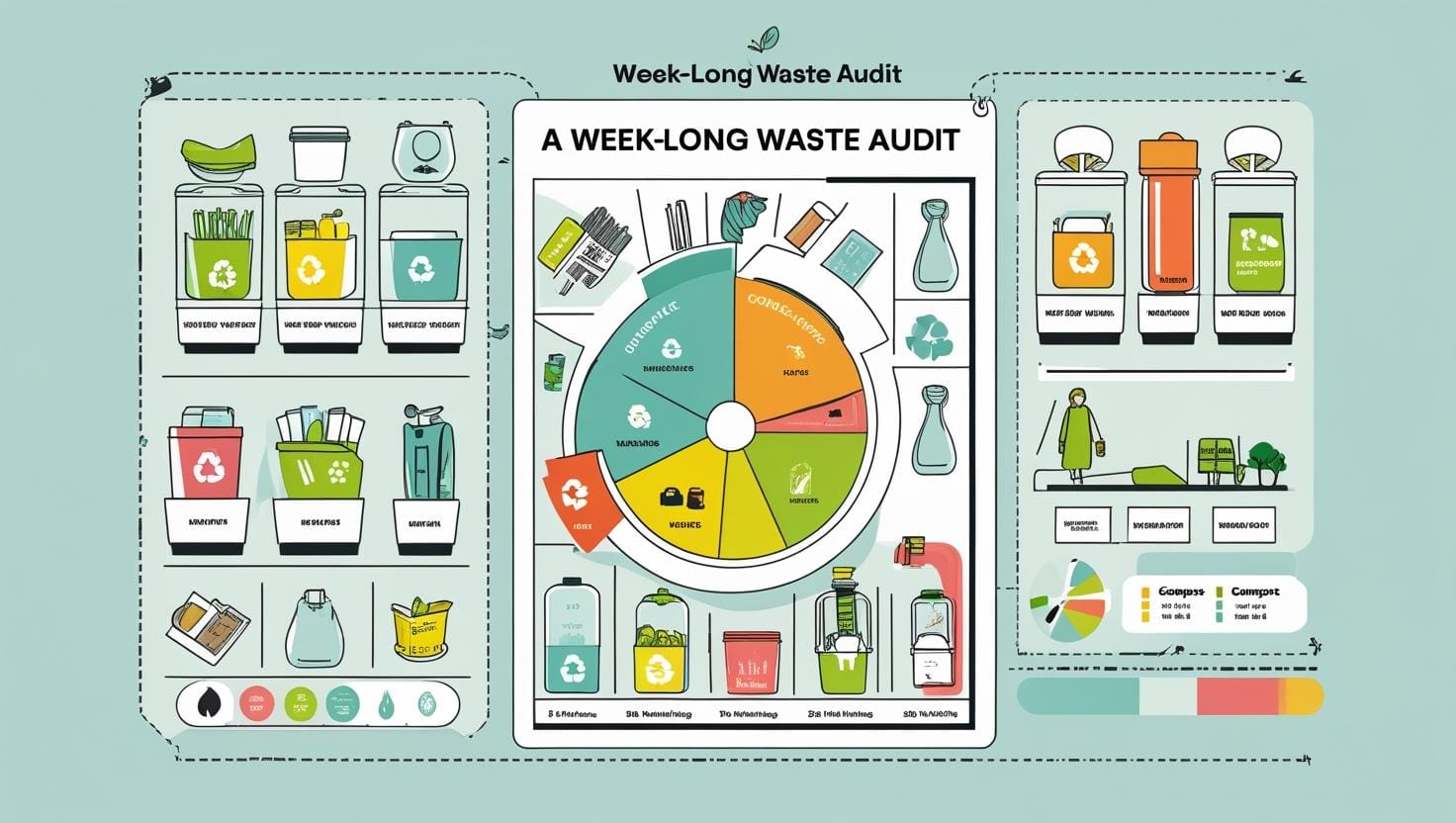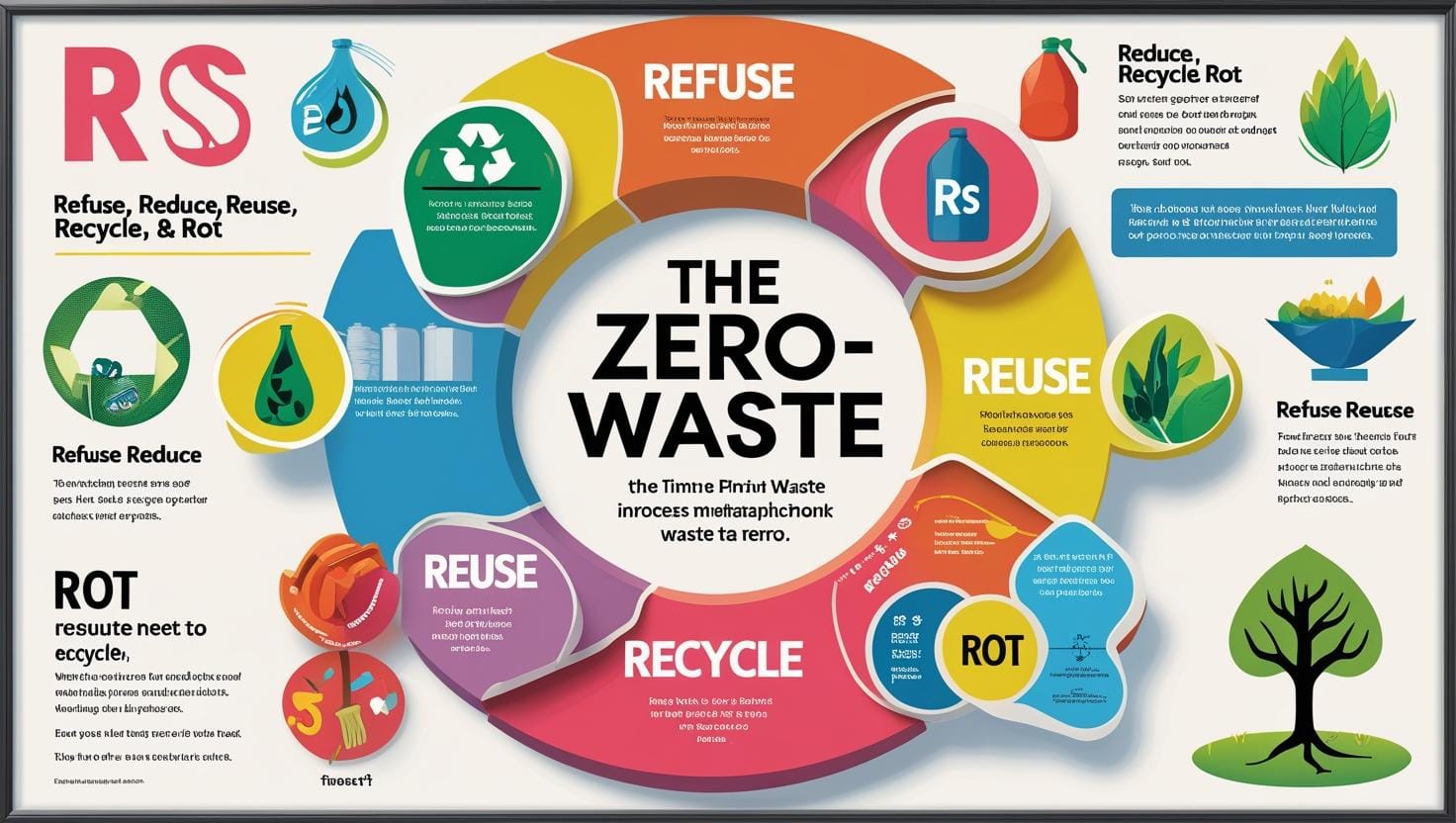Embracing a zero-waste lifestyle doesn’t mean sacrificing convenience or living like a monk. It’s about using science—data, innovation, and practical strategies—to minimize waste while maximizing efficiency. Whether you’re a busy professional, a parent, or a student, science can guide you toward sustainable choices that fit your life. This article explores how to start your zero-waste journey with evidence-based tips, to help you reduce waste without the overwhelm.
Why Zero-Waste Matters: The Numbers Speak
Waste is a global crisis. According to the World Bank, humans generate 2.24 billion tons of municipal solid waste annually, with 33% mismanaged ending up in landfills, incinerators, or oceans. Plastic production reached 390 million tons in 2021, with only 9% recycled globally. Food waste is another culprit: the UN estimates 1.3 billion tons of edible food is discarded yearly, contributing to 8-10% of greenhouse gas emissions.
These stats aren’t meant to scare you but to ground your journey in reality. Science shows that small, intentional changes in your habits can ripple outward, reducing your environmental footprint. Let’s dive into practical, research-backed steps to get started.
Step 1: Audit Your Waste Like a Scientist

Before you overhaul your life, gather data. Conduct a week-long waste audit to understand what you’re throwing away. Here’s how:
- Collect: Keep a bin or bag for all your trash, recyclables, and compostables.
- Categorize: At the end of the week, sort items into plastics, paper, food waste, etc.
- Analyze: Note what dominates. Is it single-use coffee cups? Food scraps? Plastic packaging?
A 2019 study in Waste Management found that households often underestimate their waste by 50%. By auditing, you’ll pinpoint high-impact areas. For example, if plastic packaging is your biggest issue, you can prioritize reusable containers or bulk shopping. Data drives decisions.
Step 2: Master the 5 Rs with Precision

The zero-waste mantra—Refuse, Reduce, Reuse, Recycle, Rot—sounds simple, but applying it strategically is where science shines.
- Refuse: Say no to single-use items. A 2020 study in Nature Sustainability found that banning plastic straws and bags reduced beach litter by 30% in some regions. Politely decline freebies, promotional swag, or disposable cutlery.
- Reduce: Buy less, but better. Life-cycle assessments (a scientific method to evaluate environmental impact) show that durable goods, like stainless steel water bottles, have a lower footprint than cheap, breakable alternatives over time.
- Reuse: Invest in versatile items. Glass jars can store leftovers, hold bulk goods, or even serve as planters. A 2022 Journal of Cleaner Production study noted that reusable containers cut waste by up to 70% in food service settings.
- Recycle: Know your local system. Recycling efficacy varies—EPA data shows 66% of paper is recycled in the U.S., but only 12% of plastics. Check your municipality’s guidelines to avoid “wish cycling” (tossing non-recyclables in the bin).
- Rot: Compost food scraps. The USDA reports that backyard composting can divert 30% of household waste from landfills while enriching soil.
Prioritize the Rs in order: refusing and reducing have the biggest impact, per a 2018 Environmental Research Letters study.
Step 3: Shop Smart with Science
Your shopping habits are a zero-waste leverage point. Science-backed strategies can help:
- Bulk Buying: A 2021 Resources, Conservation & Recycling study found that bulk stores reduce packaging waste by 45%. Bring reusable bags or jars to stores like Whole Foods or local co-ops.
- Choose Low-Impact Materials: Opt for products with minimal packaging or biodegradable materials. Bamboo toothbrushes, for instance, decompose faster than plastic ones, per a 2020 Sustainability study.
- Plan Meals: Food waste spikes when meals aren’t planned. A 2019 PLOS One study showed that meal planning cuts food waste by 20%. Use apps like AnyList to organize groceries and stick to your list.
Step 4: Hack Your Kitchen
Kitchens generate significant waste, but science offers solutions:
- Preserve Food: Extend shelf life with proper storage. A 2022 Food Chemistry study found that storing produce in airtight containers at optimal fridge temperatures (around 4°C) reduces spoilage by 25%.
- Repurpose Scraps: Turn vegetable peels into broth or citrus rinds into cleaners. Fermentation, studied extensively in Frontiers in Microbiology, can preserve excess produce like cabbage into sauerkraut.
- Compost: If you can’t eat it, compost it. Aerobic composting, per EPA research, breaks down organic matter in 4-12 weeks, creating nutrient-rich soil.
Step 5: Embrace Tech and Innovation
Science isn’t just about data—it’s about tools. Apps like Too Good To Go connect you with surplus food from restaurants at a discount, reducing waste. Smart bins, like those studied in Smart Cities (2023), can sort recyclables automatically. Even lab-grown packaging, like mushroom-based materials, is hitting markets, with a 40% lower carbon footprint than plastic, per a 2024 Bioresource Technology study.
Step 6: Start Small, Scale Up
Behavioral science tells us habits stick when they’re easy. A 2020 Nature Human Behaviour study found that small, consistent actions—like carrying a reusable straw—build momentum for bigger changes. Pick one area (say, refusing plastic bags) and master it before tackling more.
Your Zero-Waste Future
Starting a zero-waste life isn’t about perfection—it’s about progress. By auditing your waste, applying the 5 Rs, shopping strategically, optimizing your kitchen, and leveraging technology, you’re using science to make a difference. Each step, backed by data, cuts your footprint and inspires others. Begin today, and let science lead you to a tomorrow.
FAQs
How to start a zero waste journey?
Start by refusing single-use items and reusing what you already own—awareness is your first tool. Then compost food waste, recycle right, and slowly swap for sustainable alternatives.
What is the first thing to do to start zero waste?
Begin by observing your daily habits—notice what you throw away most often. That awareness helps you target easy swaps like reusable bags, bottles, or bulk buying.
How to live a zero waste lifestyle?
Live by the 5 R’s: Refuse, Reduce, Reuse, Recycle, and Rot—start with refusing what you don’t need. Then shift to reusables, compost food scraps, and shop mindfully to cut waste at the source.
What is a zero waste strategy?
A zero waste strategy redesigns systems to eliminate waste by prioritizing reuse, recycling, and composting over disposal. It shifts from a linear “take-make-waste” model to a circular one that keeps resources in use.
How to reduce waste in daily life?
Carry reusables like bottles, bags, and containers to avoid single-use items. Buy in bulk, compost food scraps, and say no to unnecessary packaging.

